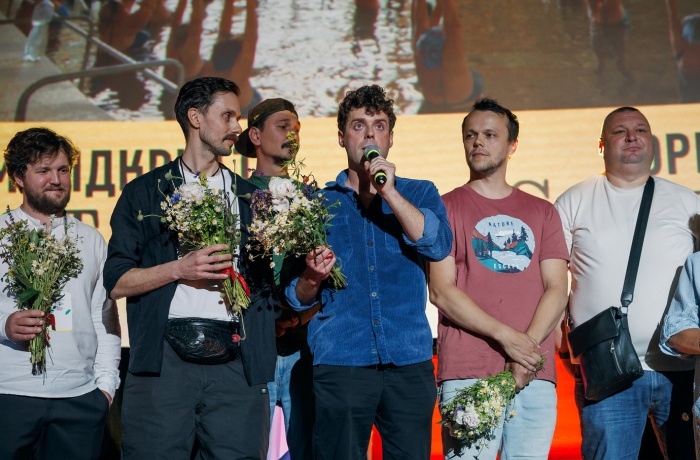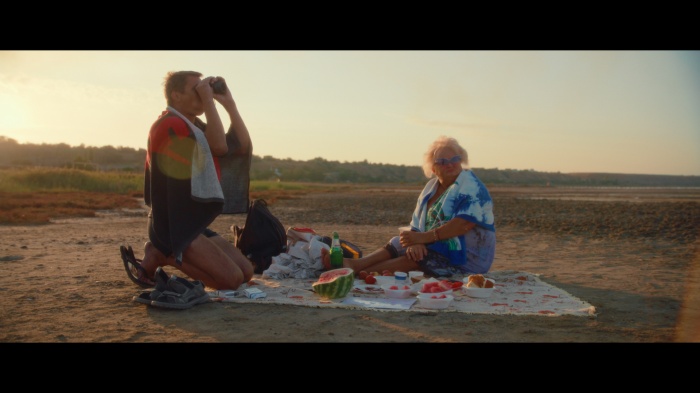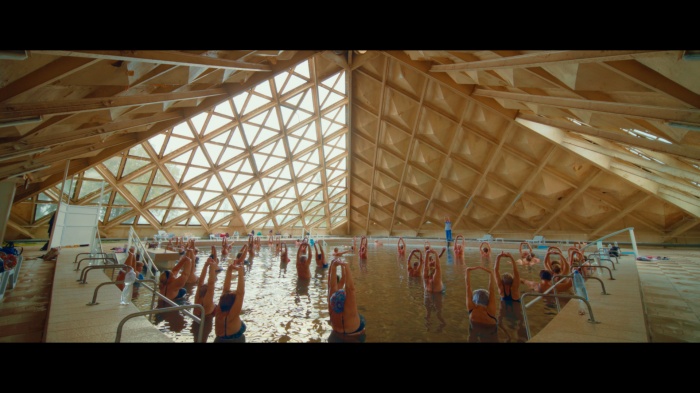
Gar, this is already your second film connected with Ukraine. You’re originally from Ireland. Why do you keep finding your stories here?
Ukraine has, so to speak, “infected” me. It all started about seven years ago. My brother was living in Kyiv at the time. He went to the gym, and it was through his photos from that place that I first saw Ukraine. It was a very strange first impression. [laughs]
I came to Kyiv, got to know people, observed the city, and made my first film – Kachalka. Since then, I’ve returned to Ukraine many times and have already made two films here. I’ve been fascinated not only by the culture but also by Ukrainians’ attitude toward health, well-being, and community.
I also felt something very familiar – the black humor that both Ukrainians and the Irish share. I’ve always been drawn to architecture, small communities, and the ways people support each other. Both of my films – Kachalka and Sanatorium – are very much about that.
From an Irish perspective, Ukraine is incredible. It’s different, and at the same time, very much alive. I simply want to keep coming back.
The idea for Sanatorium started with a photograph of the Kuyalnyk Sanatorium in Odesa that caught your eye in a photo album. What struck you about it?
Yes, that’s right. I saw a photo of Kuyalnyk’s old swimming pool and thought: “My God, how beautiful! What is this place?”. Even before I saw that photo, I already wanted to explore the theme of healing and recovery. It was during COVID in 2021. I was thinking a lot about how people heal – physically and emotionally. About a month after that idea, I was already in Odesa. I lived in the sanatorium for a week, went through all the treatments – some were pleasant, some were painful. [laughs] I talked to the staff and guests, listened to their stories. And then I realized: there’s a film here.
The sanatorium isn’t new, and the staff are well aware of that. It’s a place from the past, but at the same time a living community. That mix of an old institution and living human warmth really fascinated me.
You started the project before the full-scale invasion. What changed after February 24, 2022?
At first, we thought shooting would be impossible – the sanatorium closed. But later it reopened, and I returned. The idea of the film changed. It was no longer just a story about healing. It became a story about people trying to live ordinary lives, to rest and to heal, despite the war always being there in the background.
In Ireland or the U.S., it’s hard to truly imagine what it’s like to live with war every day. Viewers can empathize, but they can’t always feel it. That’s why it’s so important to show simple scenes: the beach, a disco, lunch, a massage, jokes – things that remind us of normal life. And at the same time, remind us that the war hasn’t gone anywhere.
People simply want to live. To have a safe life. And this fight for normality is incredibly powerful.

A still from the film Sanatorium
You’ve also mentioned Odesa’s sense of humor. How is it received abroad?
Oh yes! Odesa is famous around the world for its humor. It’s sharp, dark humor – and very alive.
During international screenings, audiences understand how devastating the war is. But sometimes they’re not sure if it’s appropriate to laugh. And what’s most interesting is that the loudest laughter came during the Kyiv premieres.
Ukrainians in the audience seemed to give everyone else permission to laugh through the pain. It’s not laughing at the war – it’s laughing despite it. It’s dignity, strength, and incredible resilience.
The film doesn’t aim to show the full horror of war – there are other powerful documentaries for that. Sanatorium is more like a course of therapy: after it, you just want to take a deeper breath.
Did you work with a translator during filming? How did you communicate with the protagonists?
Yes, I always work with people who don’t just translate language, but also understand the culture. For seven years now, my main partner has been Serhiy Solodko. The cinematographer is Denys Melnyk. They help me understand the context, the nuances of humor, and tone.
We build trust with the protagonists before we even bring out the camera. Ukrainians, by the way, react to the camera much more calmly than the Irish. In Ireland, everyone worries about how they look. In Ukraine – “We have bigger problems than this camera.” [laughs] And that really helps make the film genuine. The editing took 23 weeks. We worked hard to make the scenes look natural and cohesive, even though they were often filmed on different days.

A still from the film Sanatorium
How did Sanatorium change you personally and professionally?
I’ve become more grateful. It’s a huge privilege to make a film you’re genuinely proud of and to hear gratitude from Ukrainians.
Many people have written to me: “Thank you for making this film.” That’s something I never expected to hear. Because filmmaking can be a selfish process, but once the film starts living on its own, it can make a difference.
I’ve come to understand Ukrainians better. And I’ve realized the world is actually smaller: beneath all the cultural layers, we’re very much alike.
Did you know that your film has already inspired some changes at Kuyalnyk itself?
Really? I didn’t know that!
Yes. After the screening, real changes began at the sanatorium’s House of Culture. Olena, who’s responsible for the entertainment program at Kuyalnyk, told us about it during the Q&A session.
That’s fantastic news. I’m so happy to hear that. To imagine that our film became part of the revival of this place is incredible. And of course, it’s deeply moving that the Sanatorium screening within Travelling Docudays UA will take place right at Kuyalnyk. It’s probably one of the best places we could have shown the film.
Main photo: Serhiy Khandusenko.
The 22nd Travelling Docudays UA is held with the financial support of the European Union, the Embassy of Sweden in Ukraine, and International Media Support. The opinions, conclusions, and recommendations expressed do not necessarily reflect the views of the European Union, the governments, or the charitable organisations of these countries. The authors alone are responsible for the content of this publication.